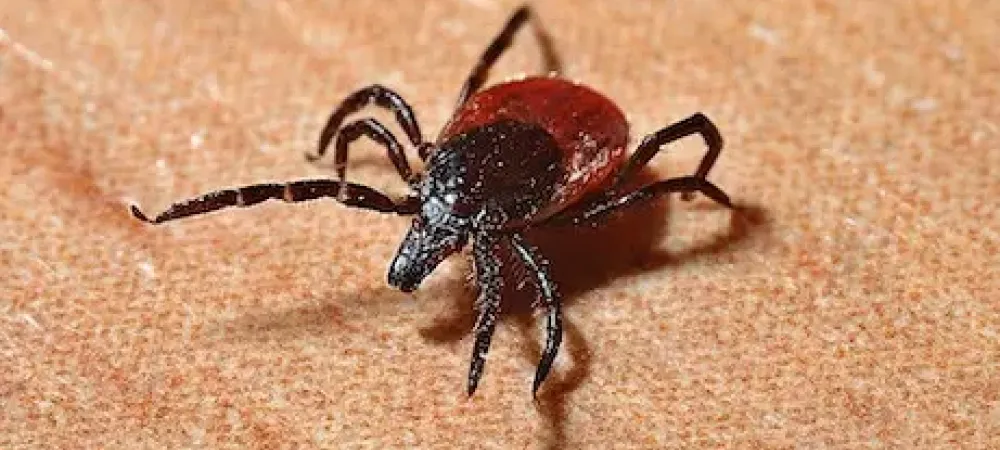Get Prepared for the Upcoming Tick Season

No one likes ticks, especially not our dogs. They are annoying, blood-sucking pests that prey on our pets and family. They are super small, making them hard to detect and challenging to get rid of. And they are notorious for the harmful diseases they carry, most notably Lyme disease. As the weather heats up here in the Manchester, New Hampshire area, and the humidity increases, ticks become more active.
Many experts are predicting that the summer of 2021 will be a doozie for ticks. According to the National Weather Service, this summer will be hotter and wetter than average. Since heat and humidity are a huge driving factor behind tick populations, this means not only will there be an increase in the tick population, but the tick season will last longer, sticking around till late October.
Why Are Ticks So Problematic?
Tick-borne diseases affecting the Northeast include Lyme disease, Rocky Mountain Spotted Fever, anaplasmosis, babesiosis, and tularemia. Of course, Lyme disease is the most prevalent in the U.S. According to the Centers for Disease Control, a recently released estimate based on insurance records suggests that approximately 476,000 Americans are diagnosed and treated for Lyme disease each year.
Why does this matter? Lyme disease has many different symptoms and is often hard to detect. Often people do not realize they have been bitten by a tick and fail to think of the possibility when visiting their doctor. If left untreated, Lyme disease can lead to other parts of your body, causing arthritis and nervous system problems.
Ways To Help Prevent Ticks From Destroying Your Summer
There are a few everyday tips you can follow to keep yourself and your pets safe. Knowing how to identify ticks, their behavior patterns and how to protect yourself can go a long way in preventing serious illness down the road.
Learn How To Identify New Hampshire Ticks
Here in New Hampshire, there are four different kinds of ticks. We have the Deer tick, the Brown dog tick, the American tick, and the Lone star tick. They are tiny, making them hard to see. Typically, the size of a pencil eraser, they do not have wings, are oval and flat. Adult ticks have eight legs, but tick larvae only have six. Ticks can be grayish-white, brown, black, reddish-brown, or yellowish in color, depending on their species.
Understand Tick Behavior
Because ticks feed on warm-blooded animals, they are usually found living close to their hosts. This includes rabbits, deer, squirrels, and other rodents. Ticks typically live in wooded areas with lots of tall grasses and weeds, leaves, and wetlands. They can be found in woodpiles, overgrown patches in your yard, and around birdbaths and feeders. They can go for many months without feeding, and despite popular belief, can still be active in mild winters. Knowing this, you can be prepared by wearing the appropriate type of clothing, using repellents, and checking over body after spending time in wooded and grassy areas.
Keep Your Lawn Well-Manicured and Free of Debris
A clean-cut, debris-free lawn can go a long way in preventing ticks. This includes keeping the grass cut, the trees and shrubs trimmed, and the landscape beds cleaned. Installing retaining walls or physical borders made of gravel or wood chips along your yard’s edges can help prevent additional hiding places for ticks. Avoid attracting wildlife that may carry ticks with them, such as raccoons, rabbits, deer, and rodents, by keeping trash in bags and cans inside—cover grills and never leave any food sources outside, even overnight.
Check All Clothing & Gear
When out for a hike or just hanging out in the backyard, inspect your clothing for any evidence of ticks. Any ticks that are found should be removed immediately. Tumble dry your clothes in a dryer on high heat for ten minutes to kill any ticks not found. If your clothes require washing first, use hot water. Carefully examine all backpacks, coats, jackets, and gear as ticks like to hitchhike their way into the home.
Shower Within Two Hours of Being Outdoors
Showering within two hours has been shown to reduce your risk of contracting Lyme disease and other tick-borne illnesses.
Check Your Body Thoroughly
Conduct a full-body check in front of a mirror. Be sure to check the following areas on yourself and any children with you.
- In and around the ears
- Inside the belly button
- Your scalp and throughout hair
- Under your arms
- Around your waist
Check Your Pets Fur Thoroughly
Ticks especially like to hitch rides on unwitting dogs and cats. Be sure to check your pet’s fur completely, including behind the ears. There are tick and flea combs available at your local and nationwide pet stores that can help you inspect their fur.
Use Tick and Insect Repellent
Use insect repellents that are Environmental Protection Agency registered containing DEET, picaridin, IR3535, Oil of Lemon Eucalyptus (OLE), para-menthane-diol (PMD), or 2-undecanoate. Always follow proper instructions when doing so.
Get Professional Tick and Surface Insect Control for Your Manchester Area Lawn
At Alliance Landscaping, we know that as soon as the warmer, humid weather arrives, we have to be on standby for ticks and other pests. We offer perimeter tick control services as well as a full coverage surface insect control program that targets not only ticks but fleas, ants, and other lawn pests. Our three to five seasonal treatments will eliminate and prevent future infestations. Learn more by visiting our page on Tick and Insect Control. Or give us a call at 603-704-4230 or contact us here.
For other tips and ideas, check out our other blog articles and follow us on Facebook, Twitter, and Instagram.
